Visiting Meteora: Monasteries in the Sky
Somehow I convince my mom to go on crazy adventures with me and she's (almost) always up for it! No jumping out of planes or bungee jumping, but feet-on-the-ground adventures, she’s usually good to go!
When my mom and I decided to go to Greece in May 2025, visiting Meteora - the Monasteries in the sky - was on my 'must do' list. I visited Greece many years ago and always regretted not taking time to go to Meteora, so I decided not to make the same mistake twice!
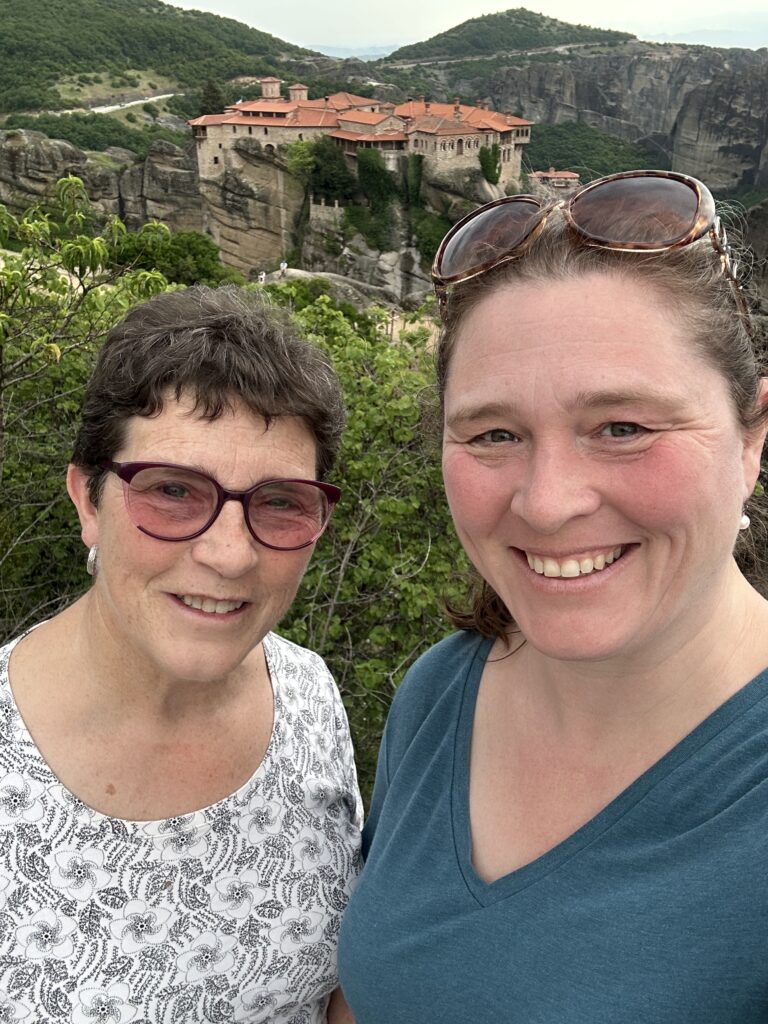
If you’re not familiar with this enchanting place, let me tell you a little about it its unique history. About four hours outside of Athens, along a well-kept and only moderately busy highway, you exit to the small town of Kalambaka and then you can continue further to Kastraki, which is where we stayed. These towns are built at the base of towering rocks. Look a little closer, depending on how clear the day is and you’ll begin to see monasteries perched on top of some of the towering rock pillars. Seemingly out of nowhere, there’s a sky-high rock with a monastery built on it and no connecting roads! And these are just your first glimpses. Look closely at the photo on the left. At the right-hand side of the rock, at the very top you'll see a monastery!
The name “Meteora” translates to ‘suspended in air’. When the fog and clouds roll in around these towering rock pillars, the monasteries appear to be floating in the air. This happens more regularly in the Winter when the fog gets stuck in and around the base of the rocks in the valleys.
As early as the 9th century hermits were climbing these towering rocks and taking refuge in the caves and crevices, appreciating the silence, tranquility and being close to their God. In the 14th – 16th century monastic communities began to build monasteries as both homes and places of worship for the devout monks. These structures were literally built from the ground up, one hanging rope, many rope ladders, by one death-defying rock-climbing-monk at a time. As time passed, they began implementing pulley systems to raise building supplies and food to the top, but for hundreds of years, monks scaled the rock walls up and down each time they left the premises.
Three of the most well-known monasteries: Great Meteoron, Varlaam, Roussanou were places of worship and places of refuge from invaders. They were fortified and had difficult access which kept them safe from war and conflict.
From the 15th – 19th centuries, the monasteries became even more important housing manuscripts and religious artifacts, along with Greek revolutionaries. Their remote location and difficult access meant that they survived both wars and raids, keeping history and culture intact.
At the height of monastic activity in this region, there were 24 active monasteries. Many of them crumbled due to natural causes and the remainder were abandoned after the Ottoman occupation and then economic decline in the 19th and 20th centuries.
Today, there are six active monasteries. By the 20th century, access to the monasteries changed with the building of roads and staircases leading to some of the largest of the structures. Now tourism is a mainstay of their existence. Fees to enter the monasteries paid by locals and tourists alike assist with the upkeep, renovations and livelihood of the monks who remain active in their communities.
In 1988 Meteora was designated a UNESCO World Heritage site, recognizing its unique natural and cultural significance, along with preserving Byzantine art, frescoes, and a glimpse into monastic life.
Fascinating right?!
Lots of people visiting Meteora do a bus tour to see most of the monasteries from incredible viewpoints. A couple of them have parking lots and walkways to them despite their precarious positions a top the rocks. They are safe to visit, albeit be prepared for stairs! You’ll also need to dress modestly and women will need to wear a skirt that covers your knees, although they can be borrowed on entry.
We did a sunset bus tour on our first night in the city and saw the monasteries from the bus windows and various viewpoints. The roads are narrow and even late in the day when most bus tours have left, there is still lots of traffic. Drivers often are busy looking at views instead of worrying about other cars on the road. Yikes! I was thankful to be in a small bus and not trying to drive and see the views!
It was grey and dreary for our sunset tour and yet it was still beautiful! We got out at a couple of viewpoints for better views and then climbed back on the small bus. The guide had a microphone and even at the back of the bus we could hear the history and stories pretty well. If that was all that we had done, it would have been pretty great.
But we wanted to make the most out of our visit and really get an authentic feel for the area. There are options to do e-biking, rock climbing and various hiking routes. We decided on a morning hike that included a hidden monastery called Ypapanti that most other hikes didn’t go to. Who doesn’t want to see a hidden gem, right?
The hike was listed as easy although we understood we'd be walking up a mountain through the woods, so we knew it wouldn't actually be 'easy'. Easy really just meant that most people without mobility issues could likely make it. Neither of us have mobility issues, so we should be good, right?
Right????
The hike certainly didn’t disappoint on incredible views! Our little group of five people from Canada, Australia and the Netherlands started with a heart-pumping, uphill climb on a steep dirt path. Thankfully, just as we were wondering if it would all be steep and loose gravel, the terrain levelled out and we stopped for a bit of information on the surrounding area from our guide.
Our guide was a young, fit, Athenian man who fell in love with Meteora and now calls it home. He did a great job of slowing down to our pace, taking lots of breaks to talk about different rock formations, scenic views, history and ruins along the way. We hiked through beautiful old forests, learned about talking rocks where people used to use echoes to communicate and saw how and where the rocks separated to form a gorge.
The terrain went from short, steep climbs to a slight incline to steep ascents all within a matter of a few minutes. Luckily though, there were a few spots that were almost flat and gave us a bit of a break. More than anything though, the early morning heat was one of the most difficult factors. We were there in the Spring and by 10am it was nearing 28 degrees.
Along the way we learned about the tiny village that picked up and moved to avoid the rebels in war times and how rebels killed commoners and soldiers from strategic points above and behind the monastery. It's really quite something to imagine people throughout history walking these ancient paths, waging wars, hiding from rebels and living their daily lives.
Almost at the halfway point we were delighted to see and learn about the hidden monastery of Ypapanti - built into one of the rocks, but not on top of it. As it is hidden and not on a main road, buses can’t access it. While you can drive to it by car, it would be a bit hard to navigate. Because of this, it is much less visited. Rather than hundreds, sometimes thousands, visiting Meteora's other monasteries, we were nearly the only people at Ypapanti. There were two couples hiking a similar trail to us who passed by. To be honest, I think they only stopped to see the monastery because we were looking up. I think they likely would have missed it altogether on their own. It’s not that it is hidden that well, but it is way above the treetops. If you are hiking and looking at your feet or surrounding forest you might not look up at the right time. If you don’t know when to look up, it’d be easy to pass by until you are at one of the viewpoints looking down on it.
We didn’t climb the stairs or the precarious narrow bridge at the top but we did get a good view from the bottom, got up close to the elevator pulley systems used for transporting materials and then incredible views from our next viewpoint!
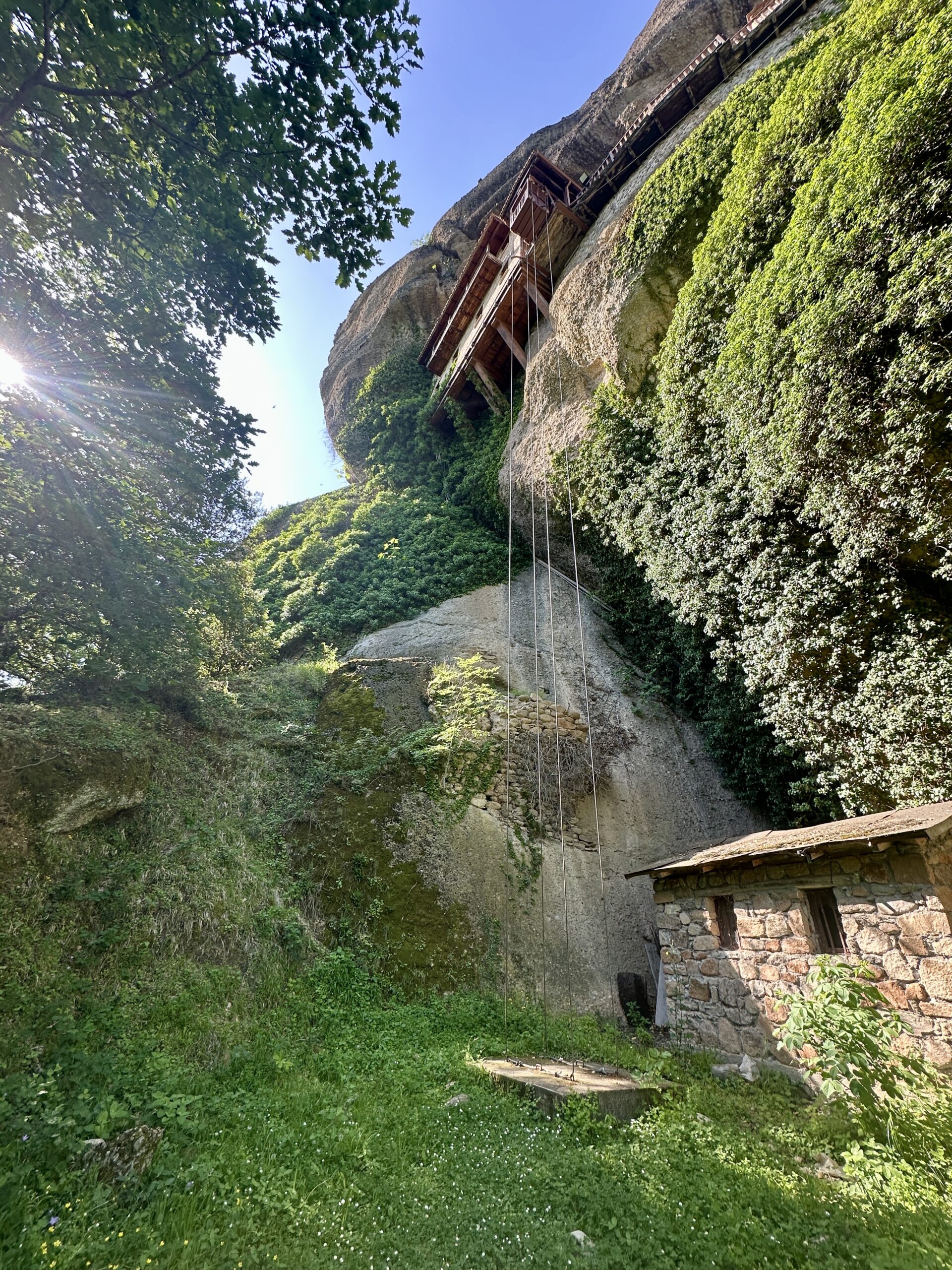
After a water break, some shade and some stories about the still-operational monastery of Ypapanti, we headed up another a steep incline in the full, glorious, but incredibly hot sunshine. We reached the halfway point with breathtaking views looking down on Ypapanti. We took another break looking out over the valley and the hidden monastery, before continuing up, up, up.
An hour or so later just as we thought we had reached the end we saw beautiful views of a monastery. It turned out that it was Varlaam Monastery, not our final destination of the day.
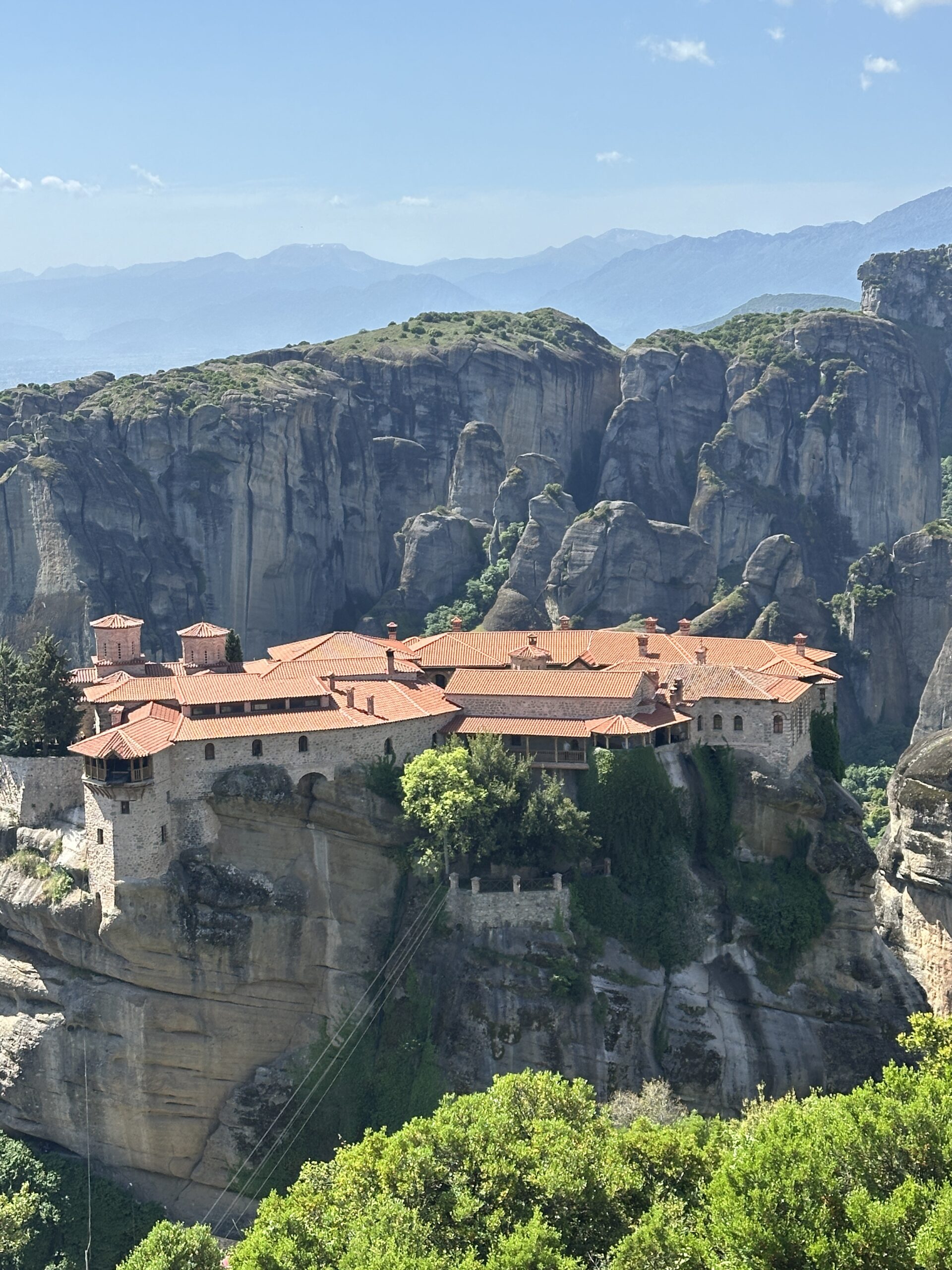
Our guide then told us 'just a little further'. We walked another half a kilometer or so around a goat- path to even more incredible views of the largest of the monastery complexes, the Great Meteoron. It truly was an awe-inspiring sight. I felt so grateful to have made it, but also to experience a different view of this feat of engineering and architecture from a totally different perspective.
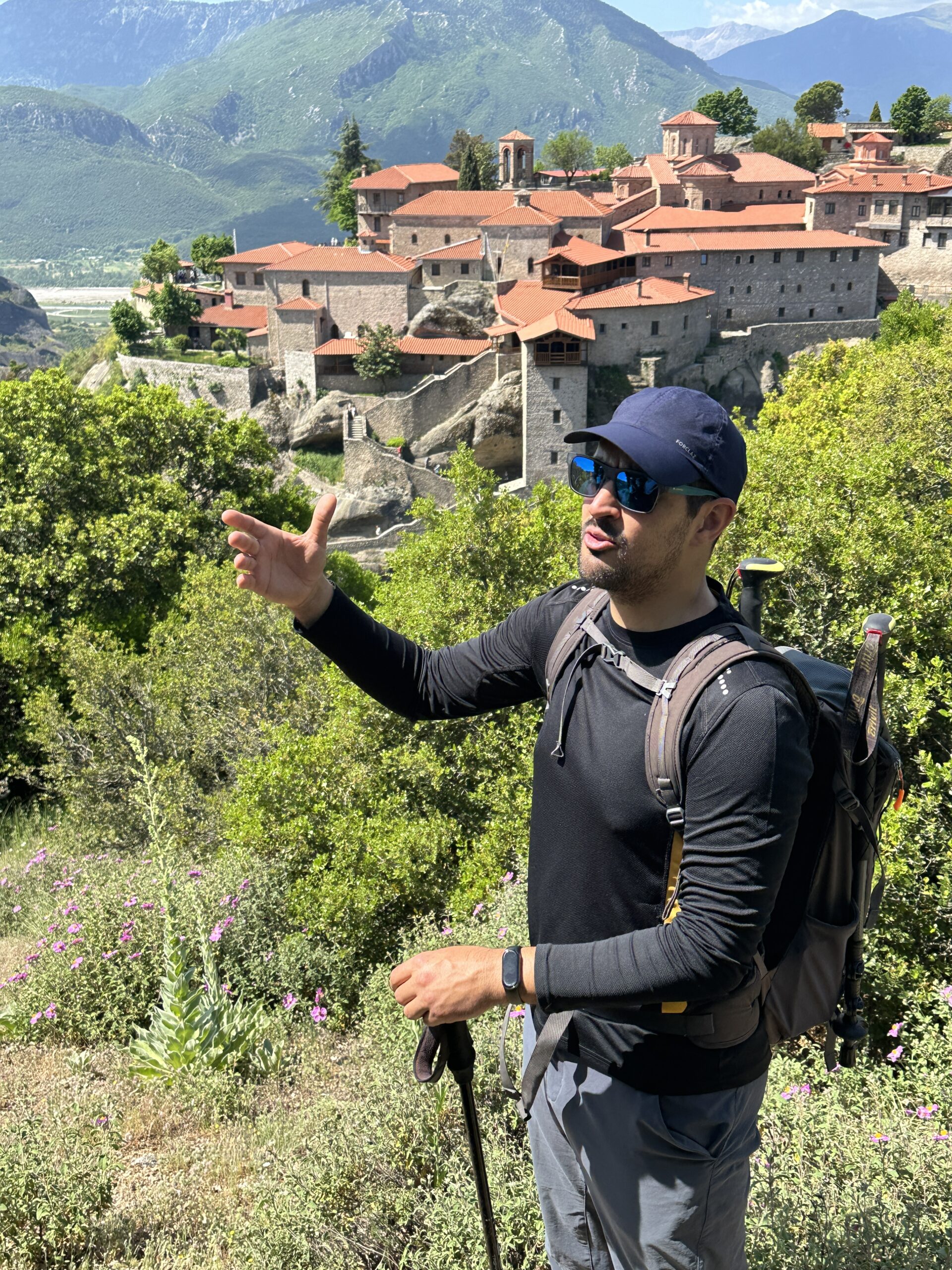
The day before we had seen the same monastery from the parking lot, on a grey dreary day. Today, we had hiked six kms or so, were treated to rich blue skies and eye-level views.
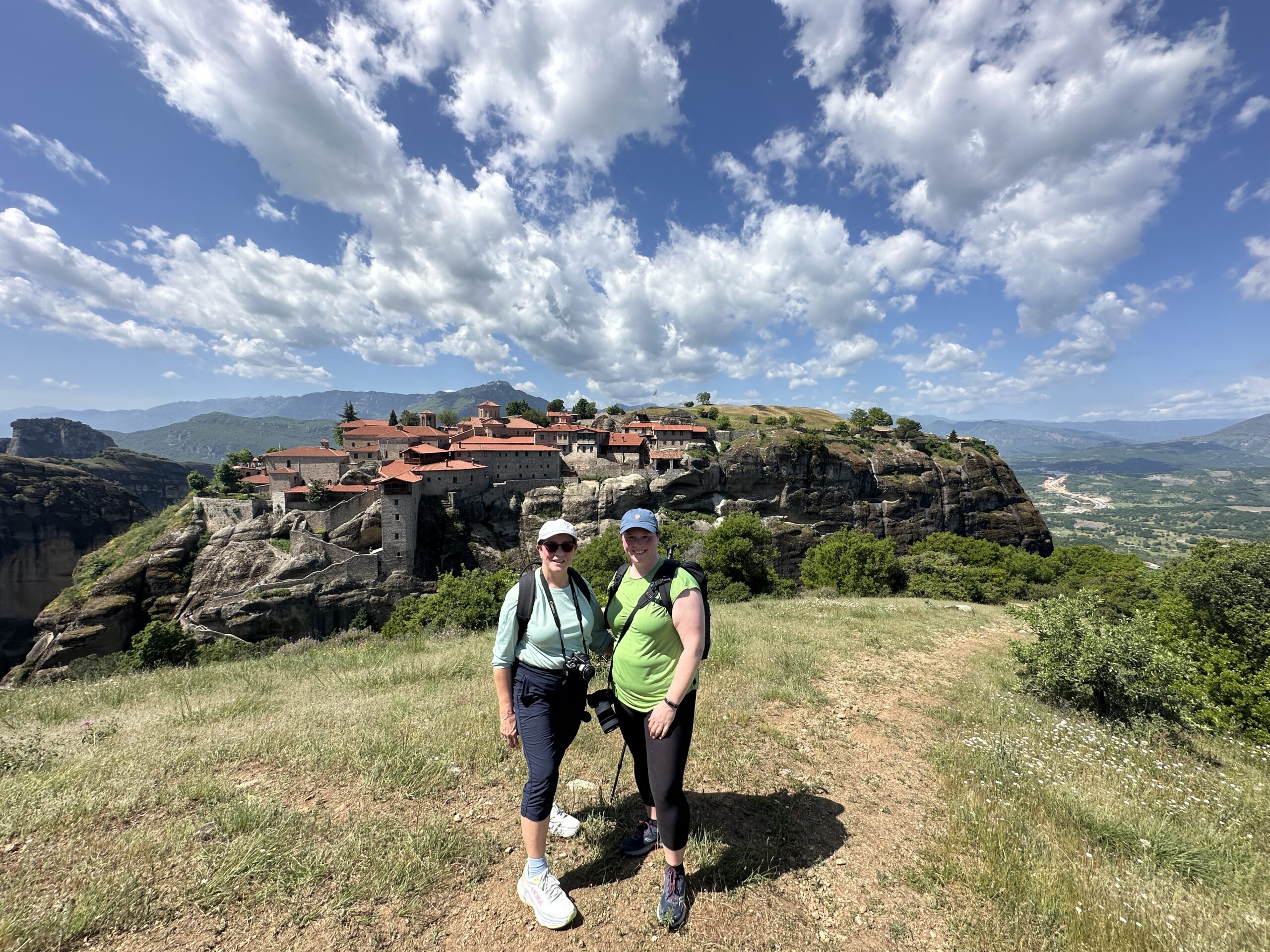
We had an hour to visit inside the Great Meteoron before we would head back down a much more direct but steeper path back to our starting point. The entry point to the Great Meteoron starts with another 300 stairs to the entrance. Not so bad if you arrived by bus, but we had already climbed 85 flights of stairs. We knew this ahead of time, but it seemed a bit too daunting to take on with tired legs. Mum and I decided not to go into the monastery, but instead to rehydrate in the shade and admire the monastery from below, at the bottom of the stairs.
I know! It seems like a terrible decision to hike to see the monastery and then not go into it, but the hike was far from ‘easy’ and we knew we were far from done! With shaky legs from climbing up, going down wouldn’t be any easier.
Once the rest of the group joined us, we headed down the precarious and steep path to the bottom. Thankfully it was shady so although hot, we were spared from much of the sun’s rays. With walking poles in hand, mum and I hobbled, limped and waddled slowly down the steep paths and around the path’s many switchbacks. We made it all the way to the bottom, tired, accomplished, in awe and un-injured!
We did more than 14000+ steps. 7.8 kms total
We did the equivalent of 85 flights of stairs.
We hiked for four and a half very hot hours to see some of the most beautiful views of our lives and took an hour long break in the shade.
It was challenging. I would never grade this hike as ‘easy’, but we did it! We were hot, dehydrated, sweaty and tired but we were rewarded with beautiful forests, hidden monasteries, wildflowers and memories for a lifetime.
After the hike, lots of water, lunch and a nap we ended the day by hiring a taxi to take us for a sunset tour. While we had done one the night prior, it was grey and drizzly so we didn’t see sunset. With the perfect sunny day in front of us, I didn’t want to miss the magic!
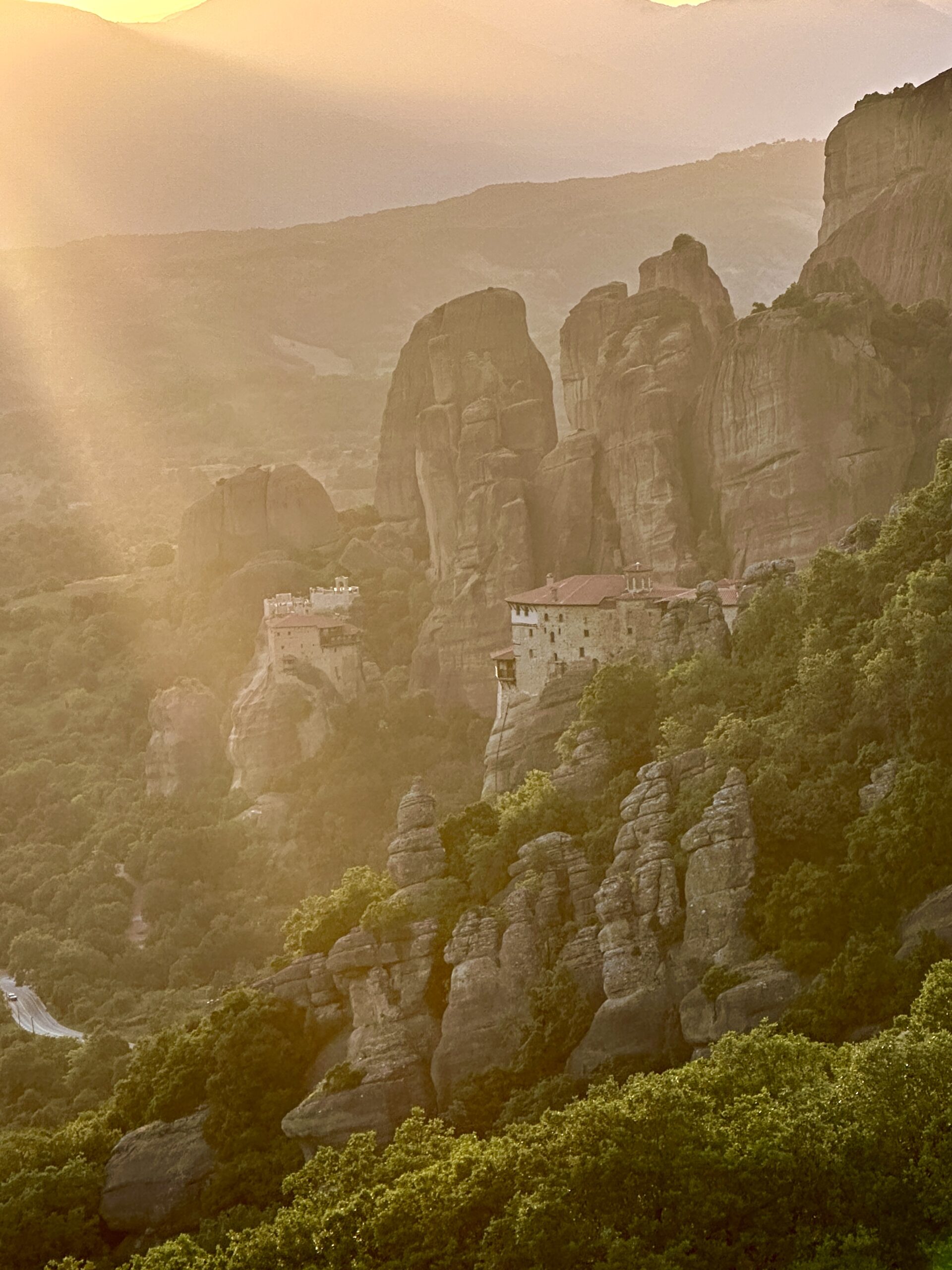
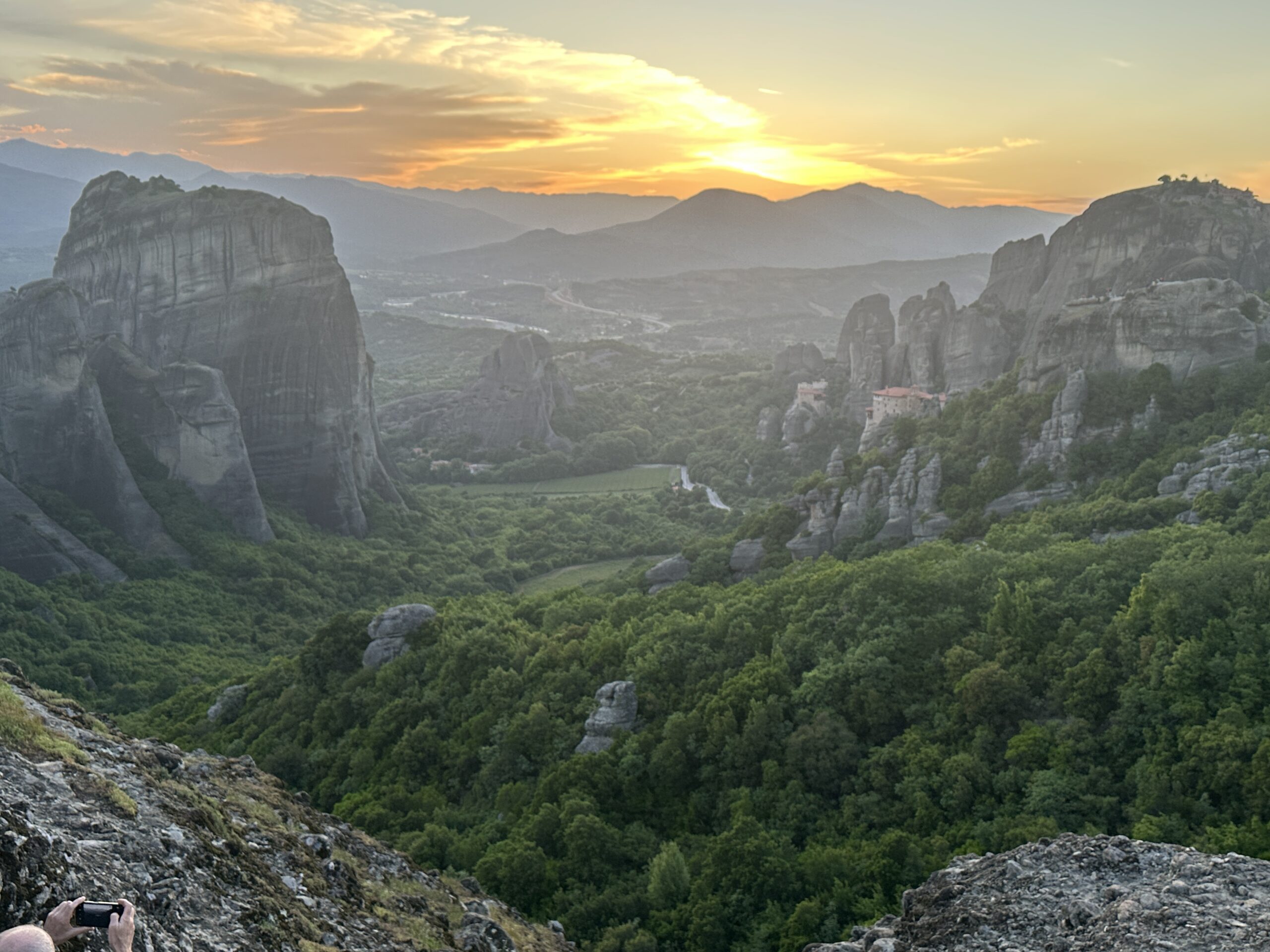
We didn’t do any more hiking, just sitting on rocks with all the other sunset-watchers taking in the changing light. As the sun went down and the light changed from orange to pink-ish-blue, we got ready to leave the lookout point. As I turned around and almost put my camera away, I saw “the shot”. This beautiful photo is one that will remind me of this day for many years to come. It represents determination -- that of the monks and my mother and I.
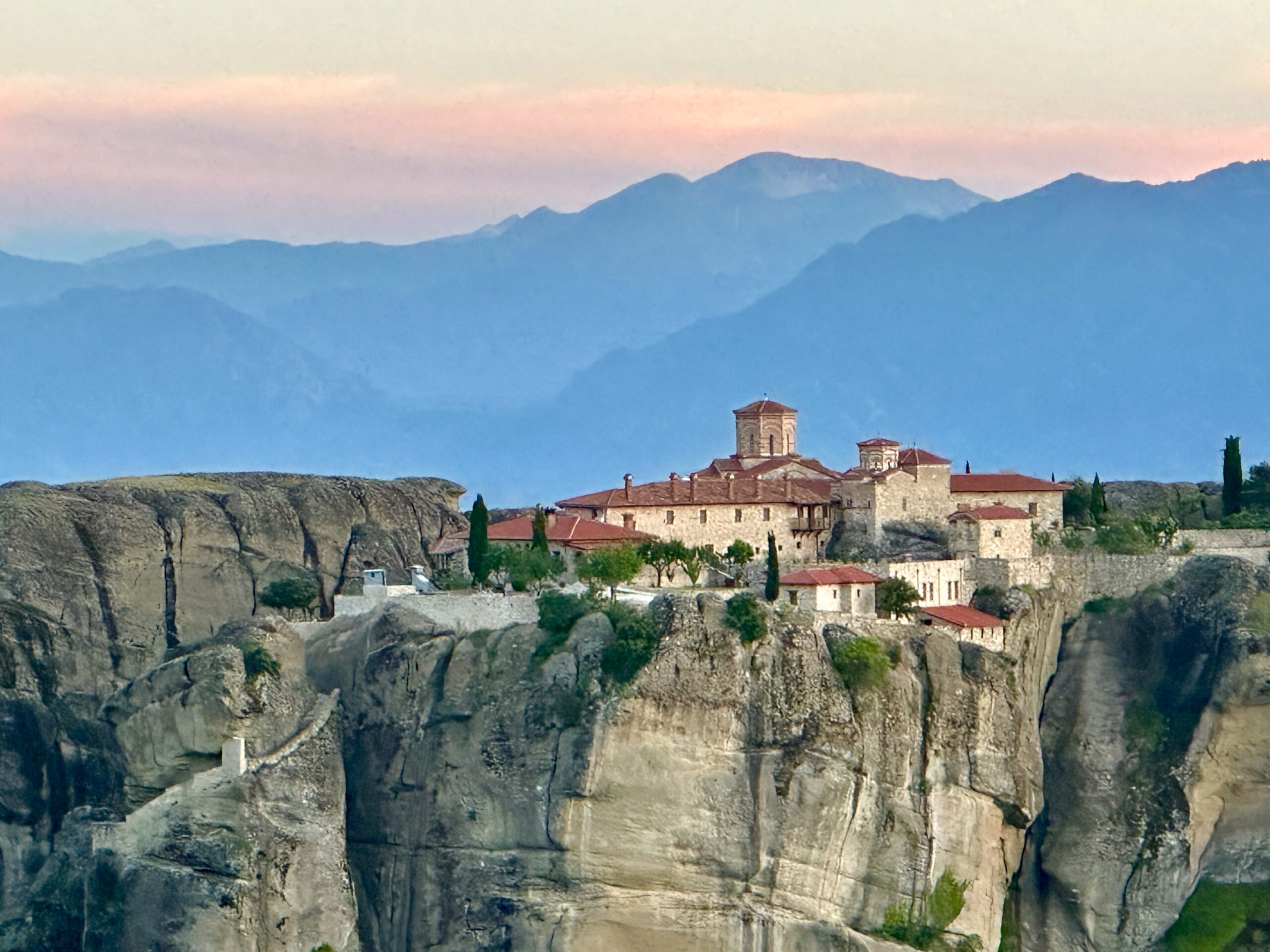
Are you ready to Visit Meteora?
We 100% recommend challenging yourself and visiting Meteora a little differently. Hike it. Bike it. Climb it! If you’d like to experience Meteora in all its authentic glory rather than just from the window of a bus, set up a consultation here. We’d love to organize your dream trip to Greece!

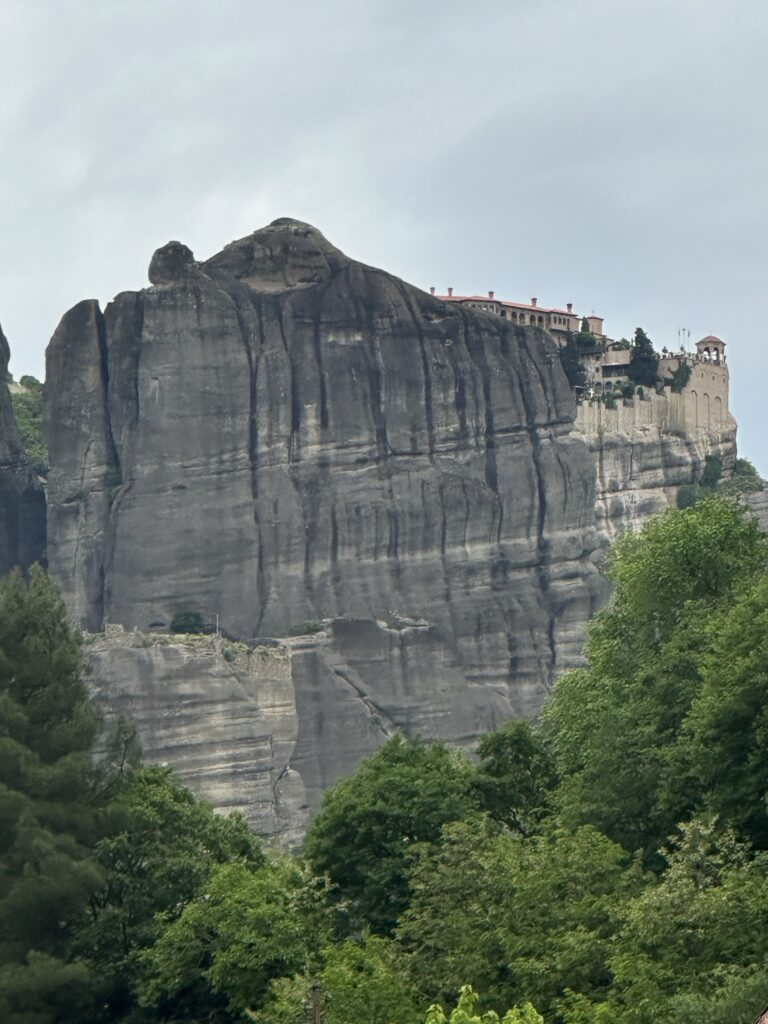
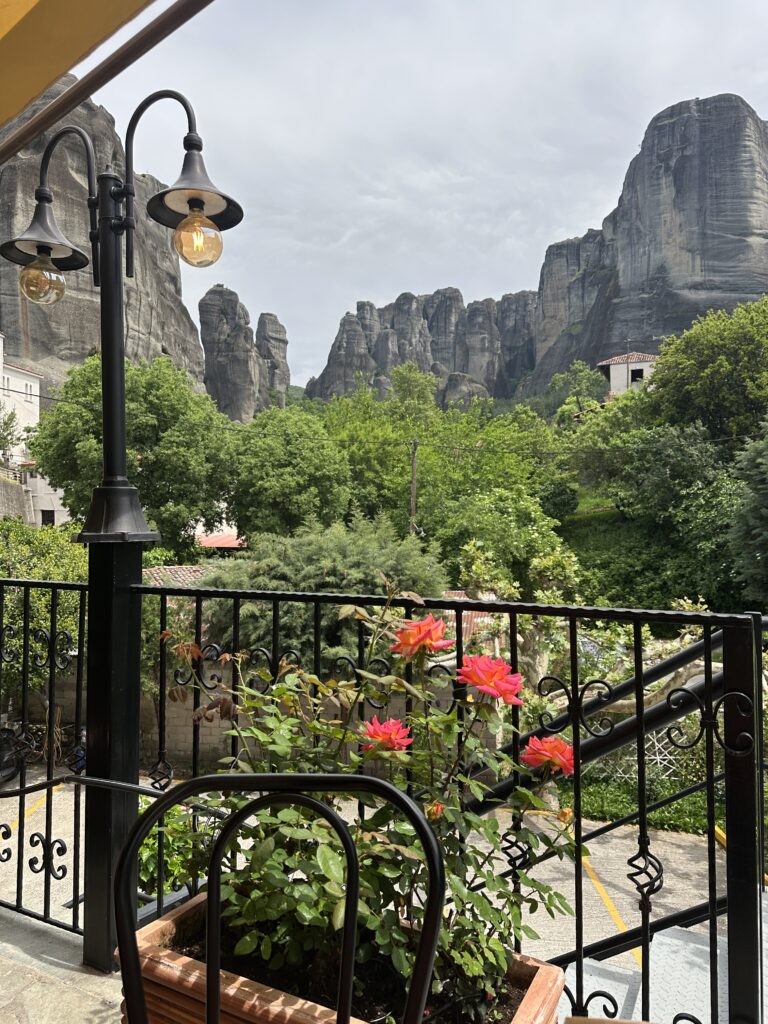
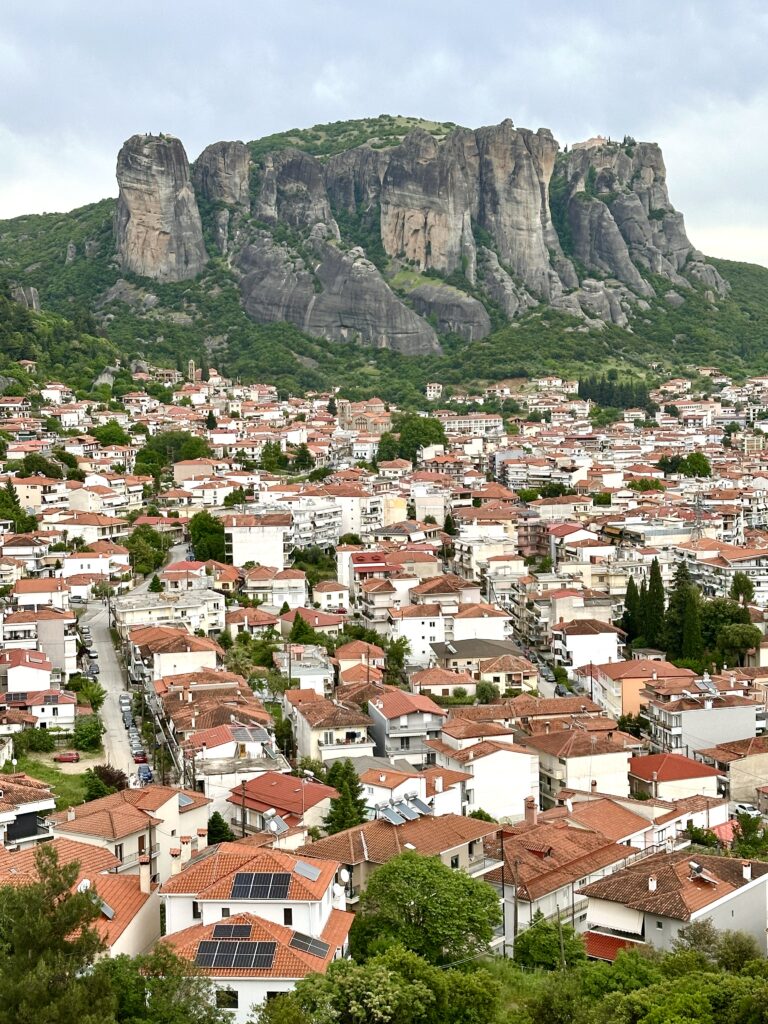
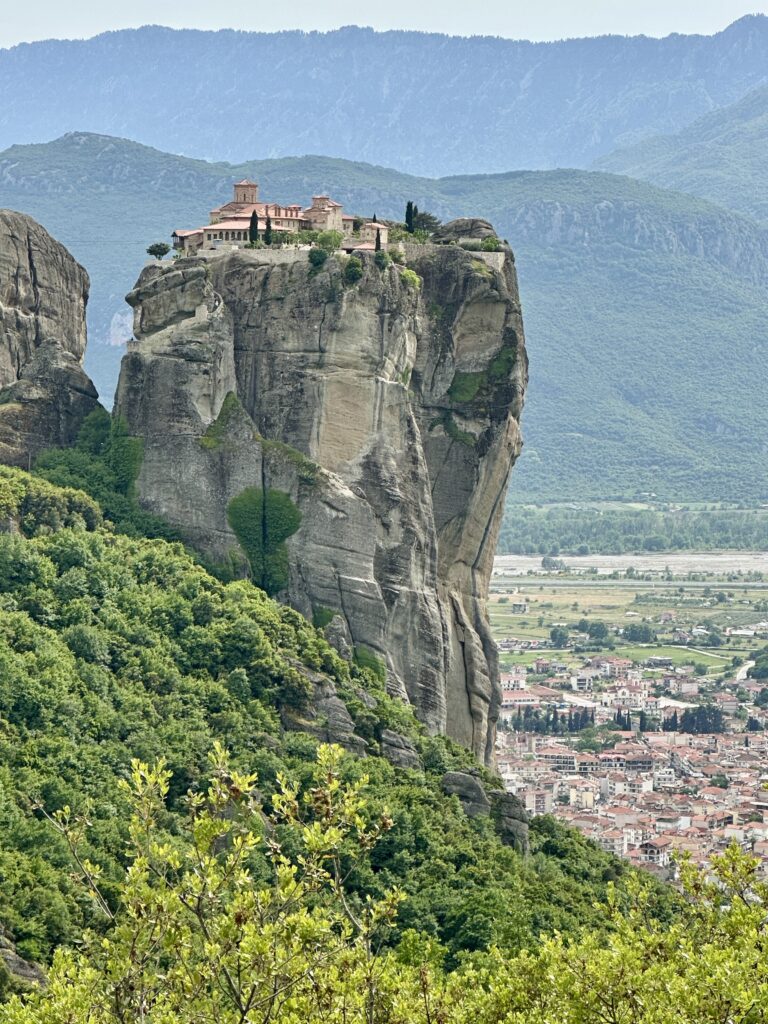
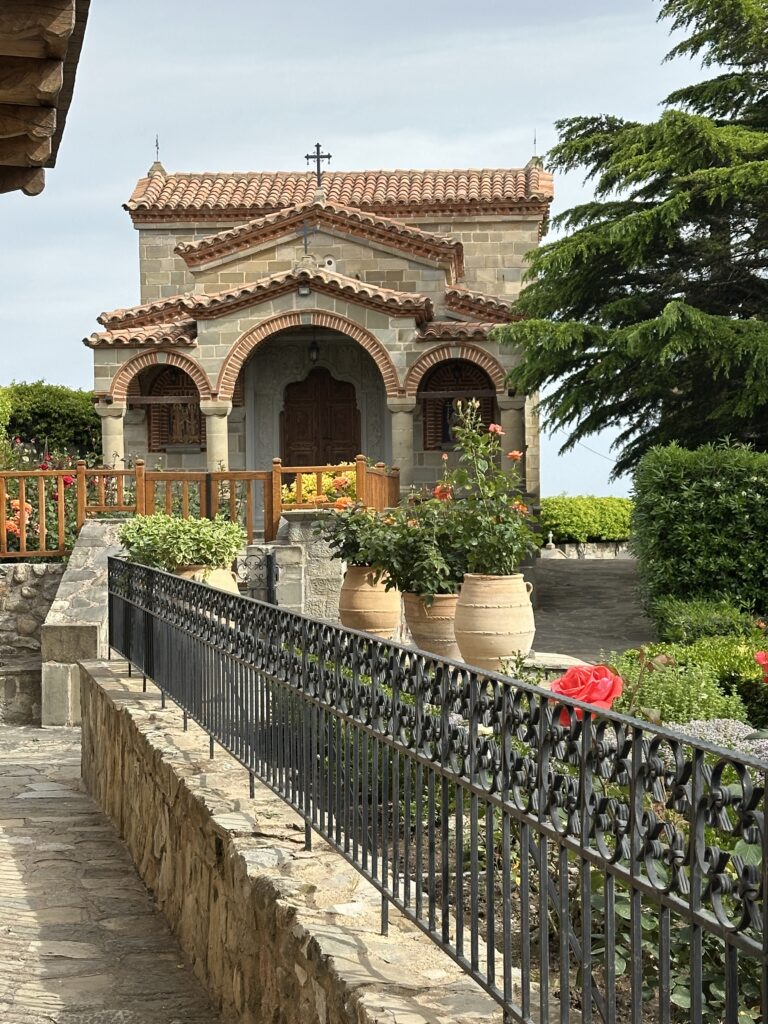
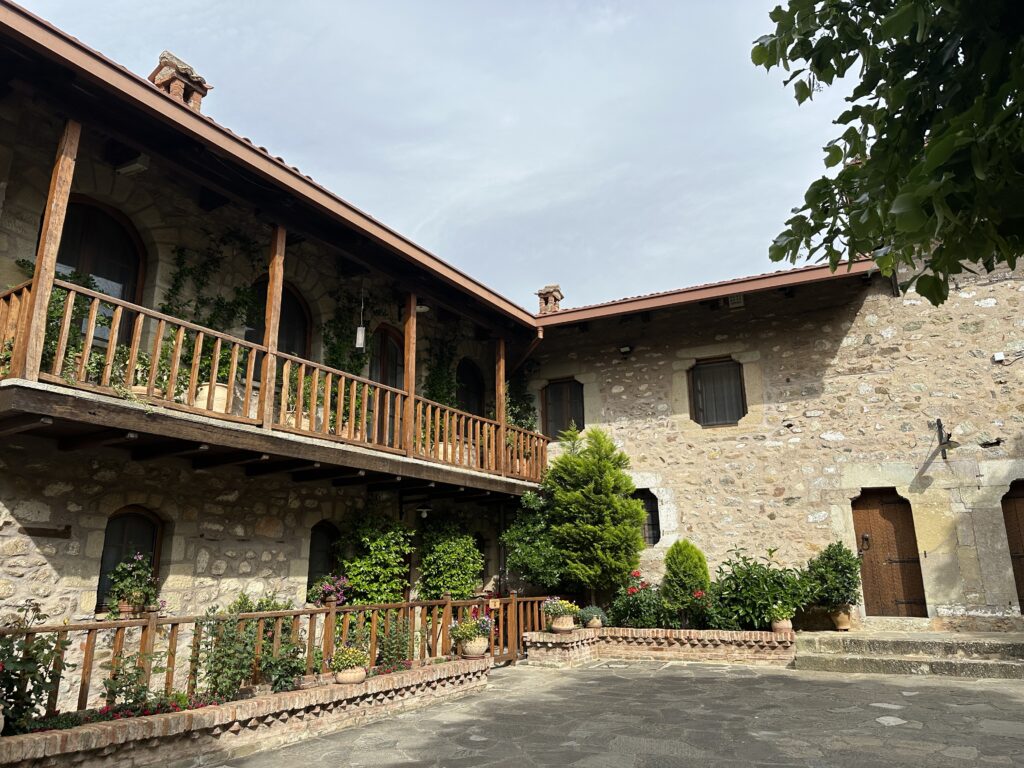
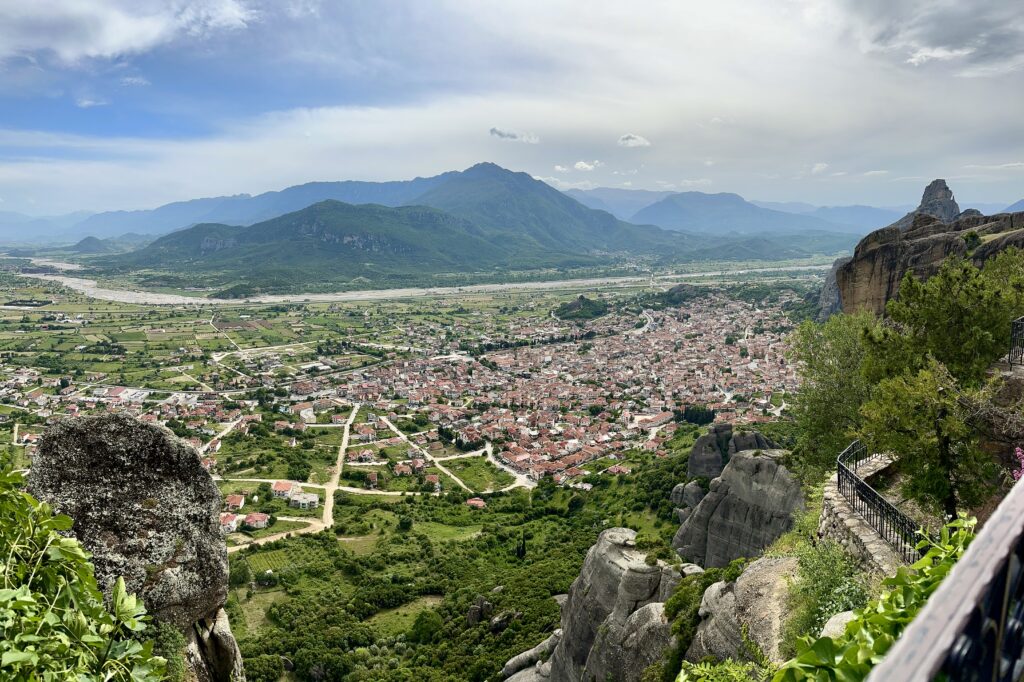
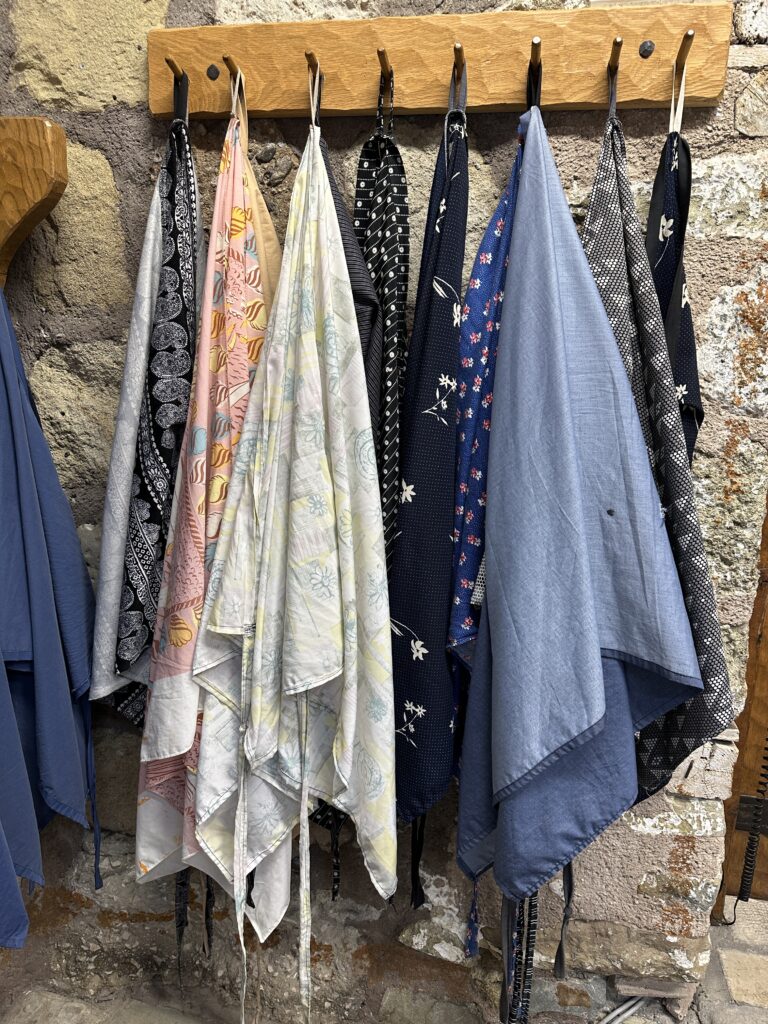
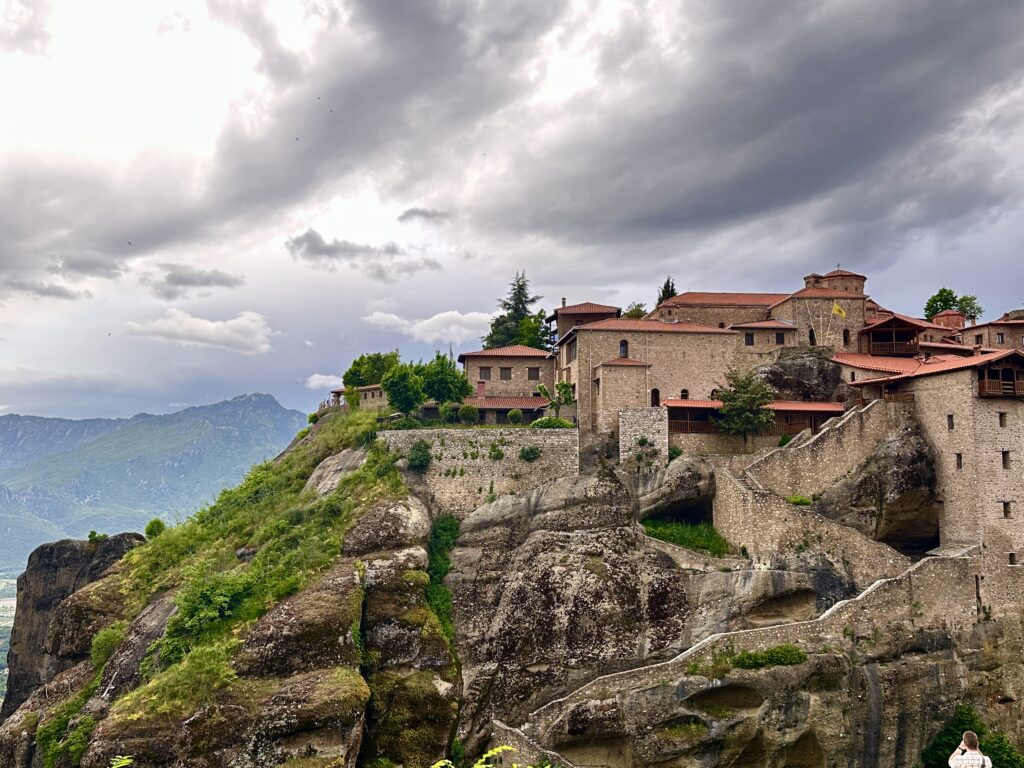
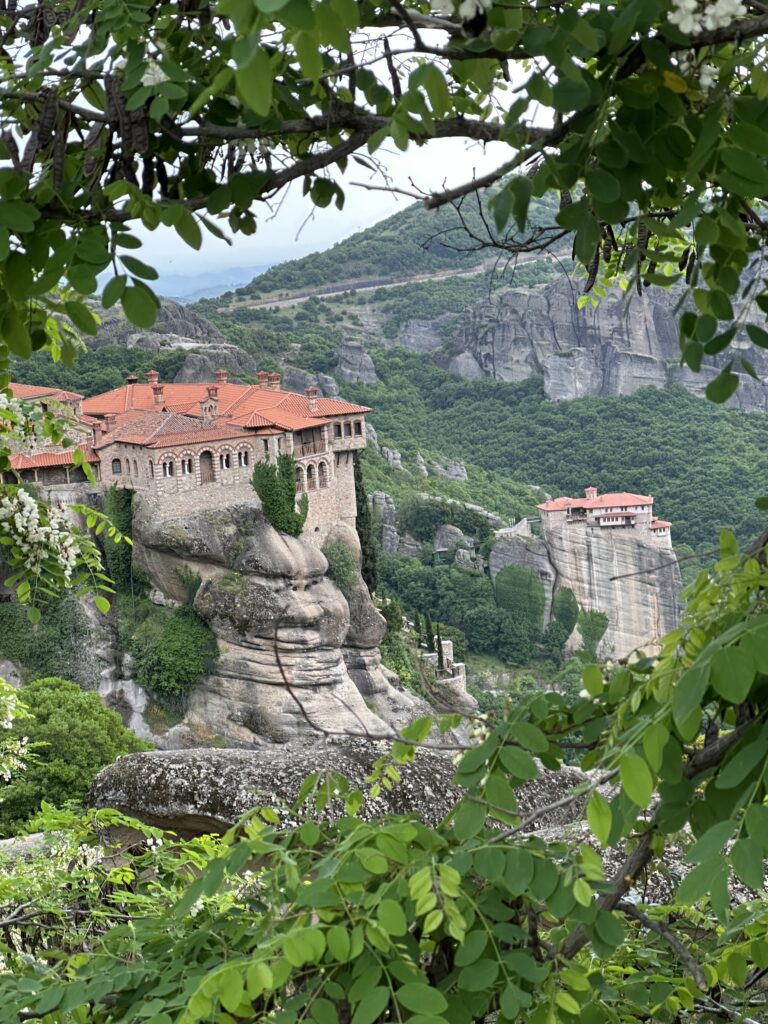
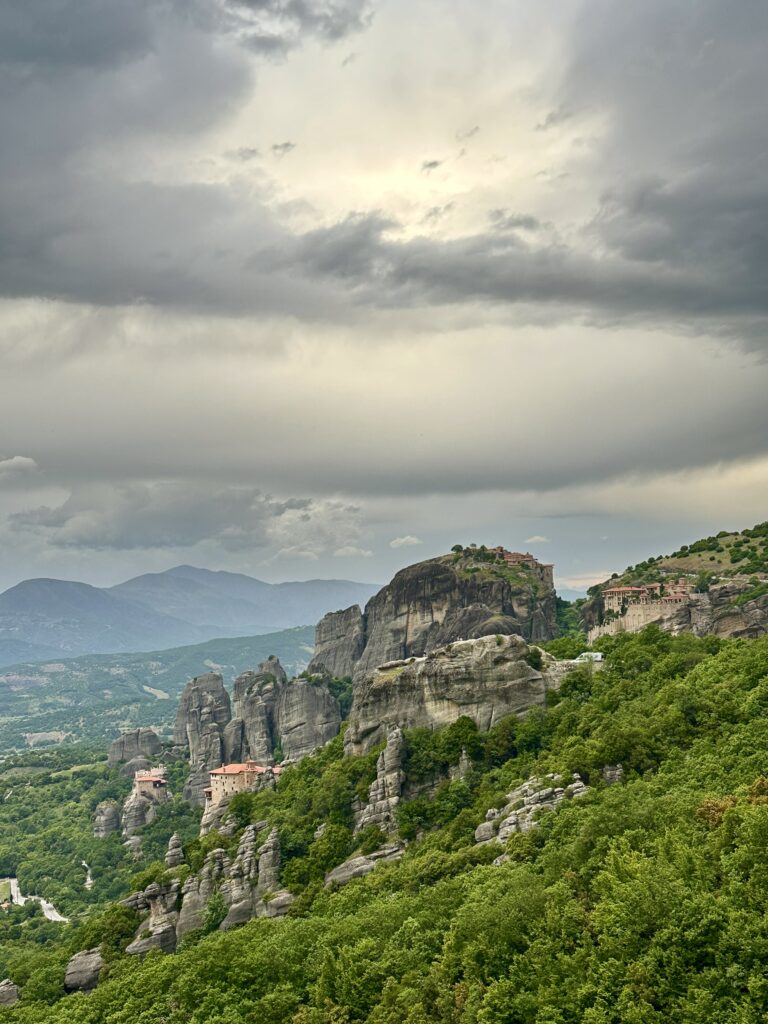
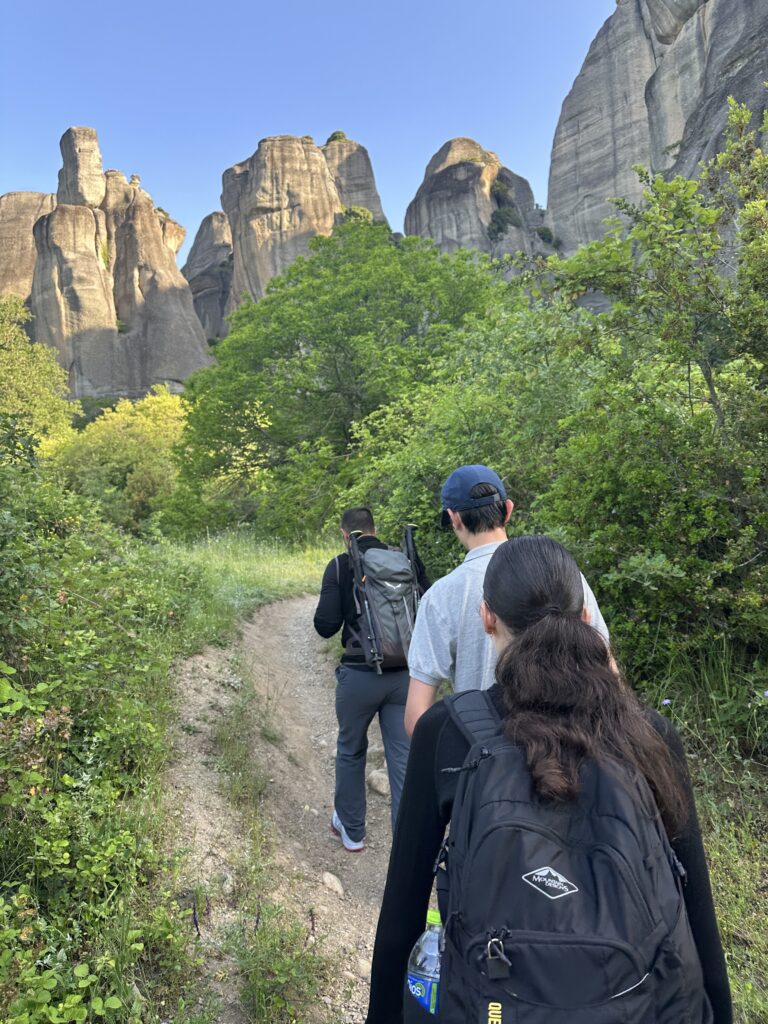
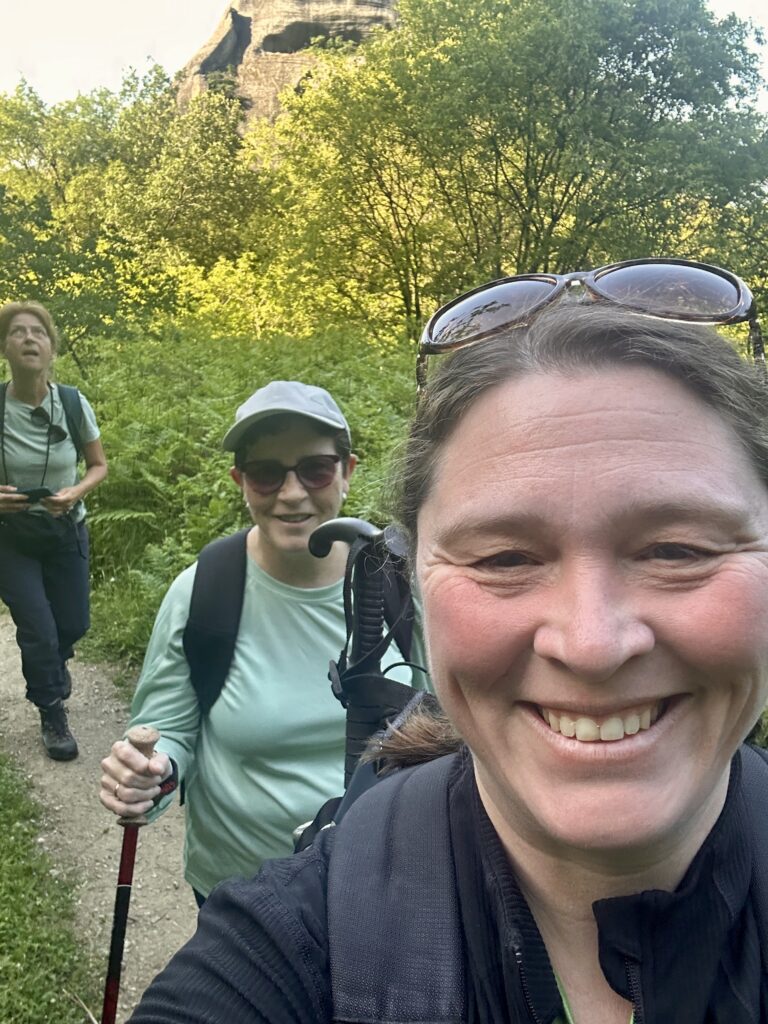
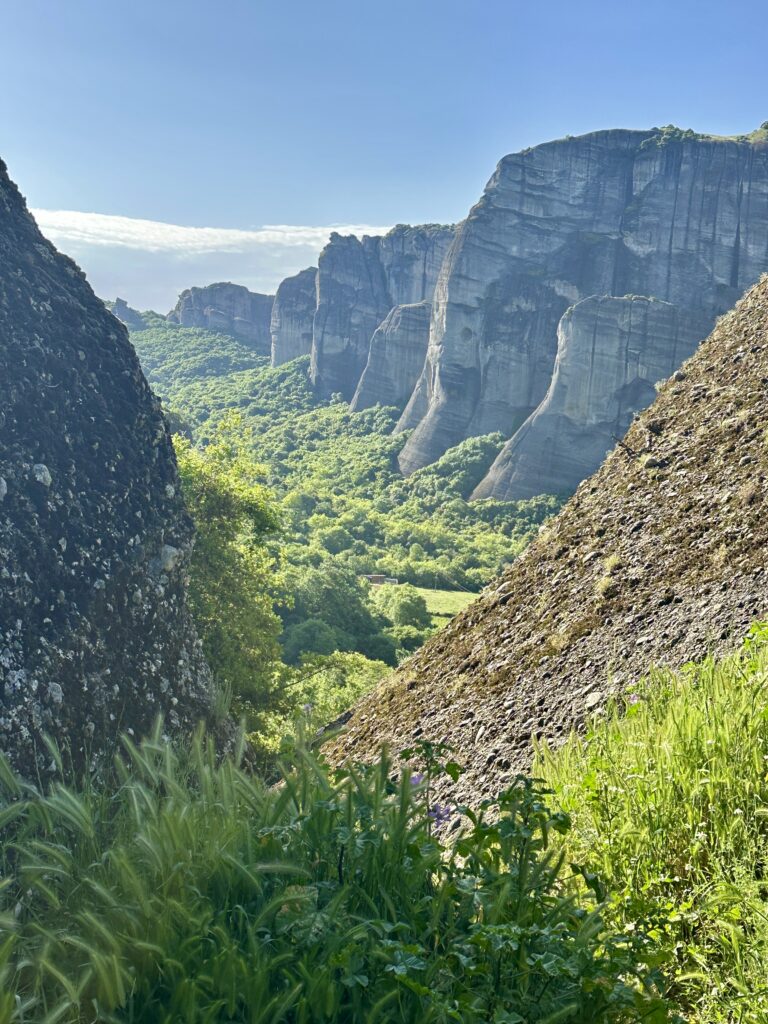
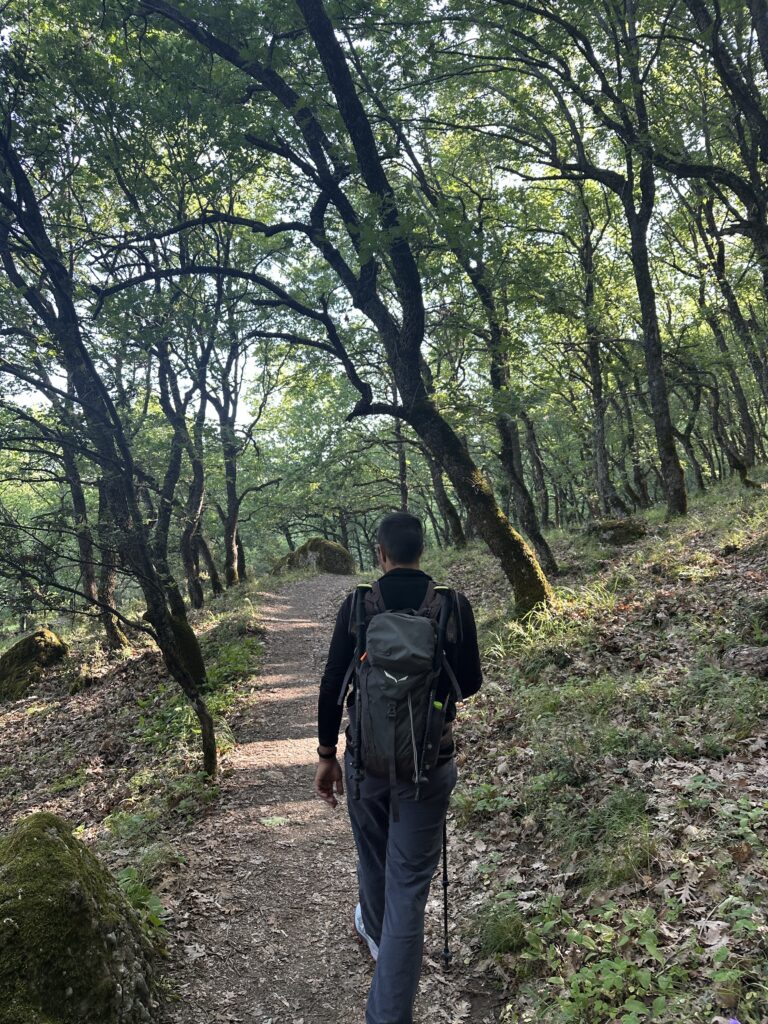
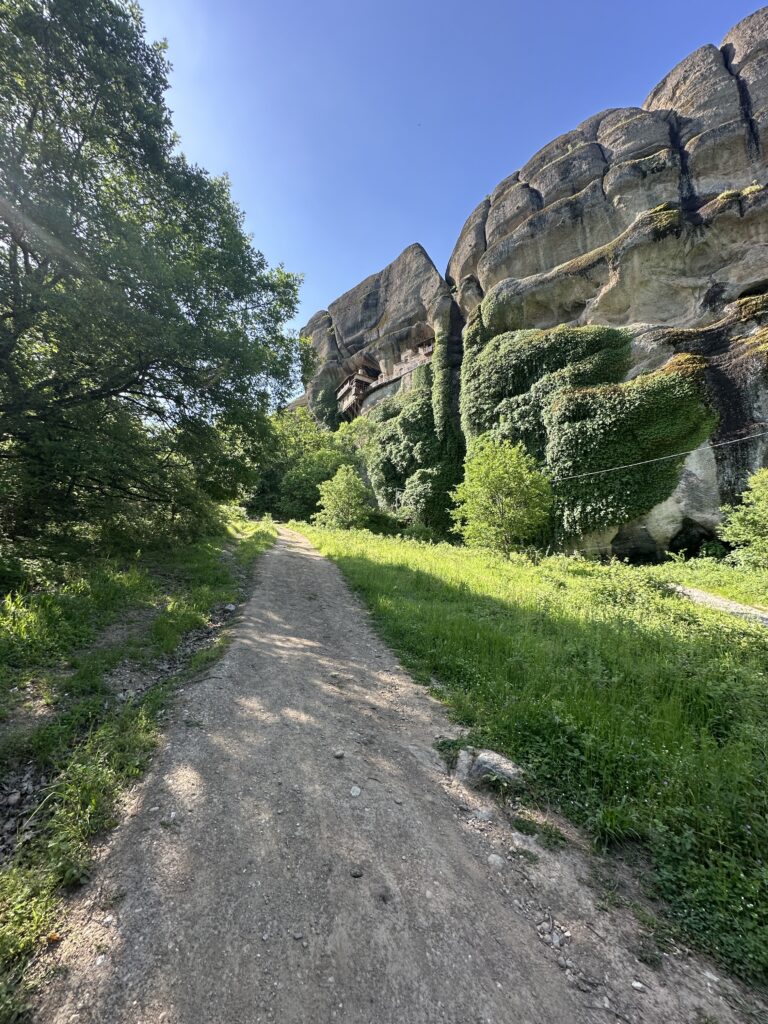
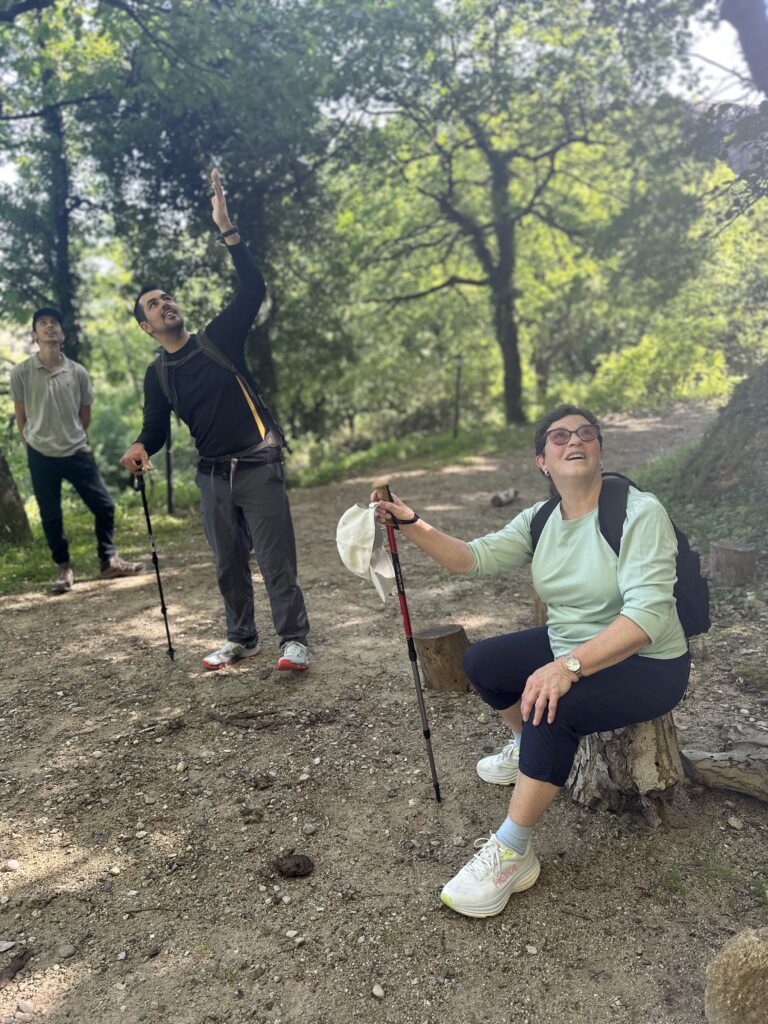
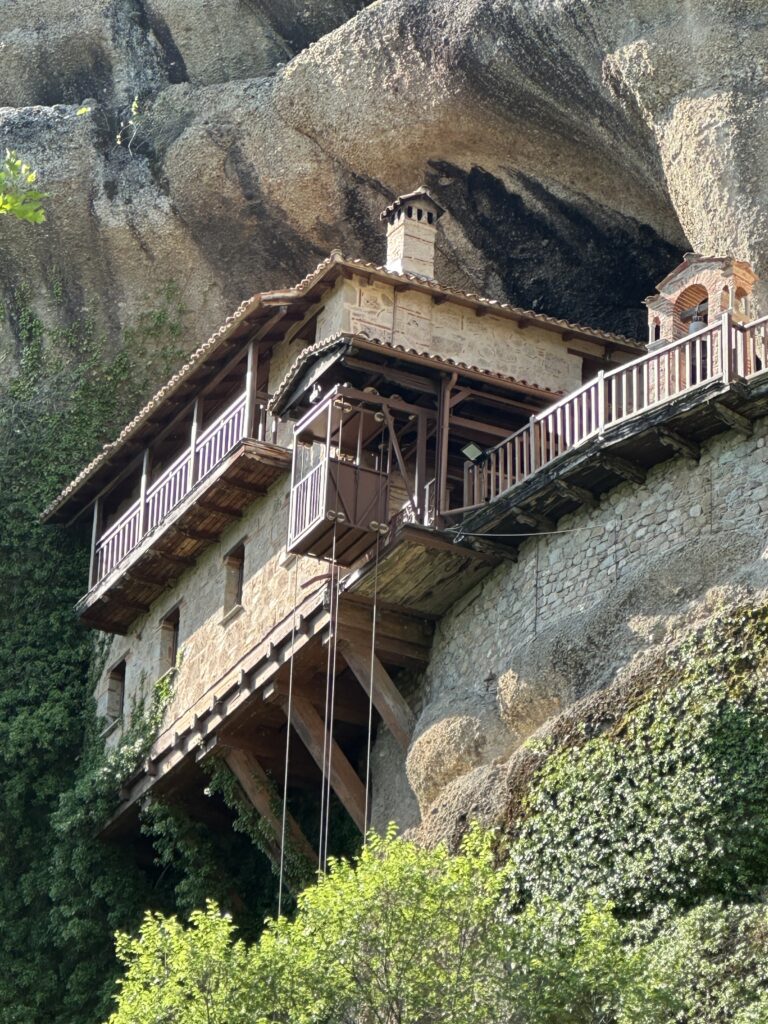
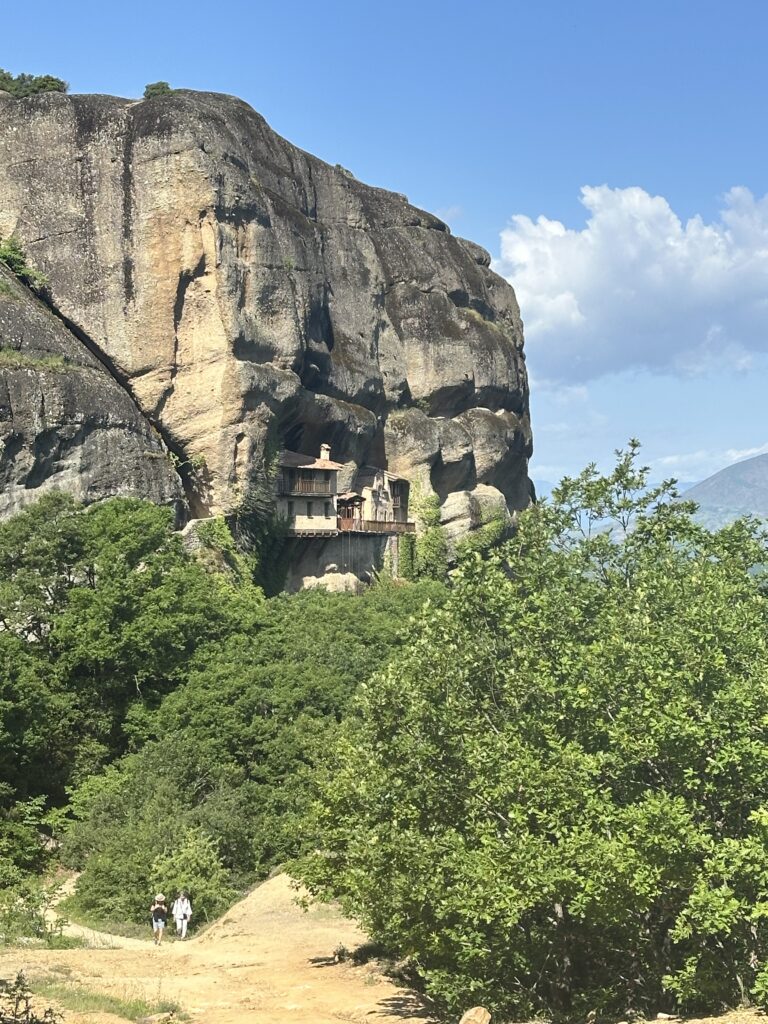
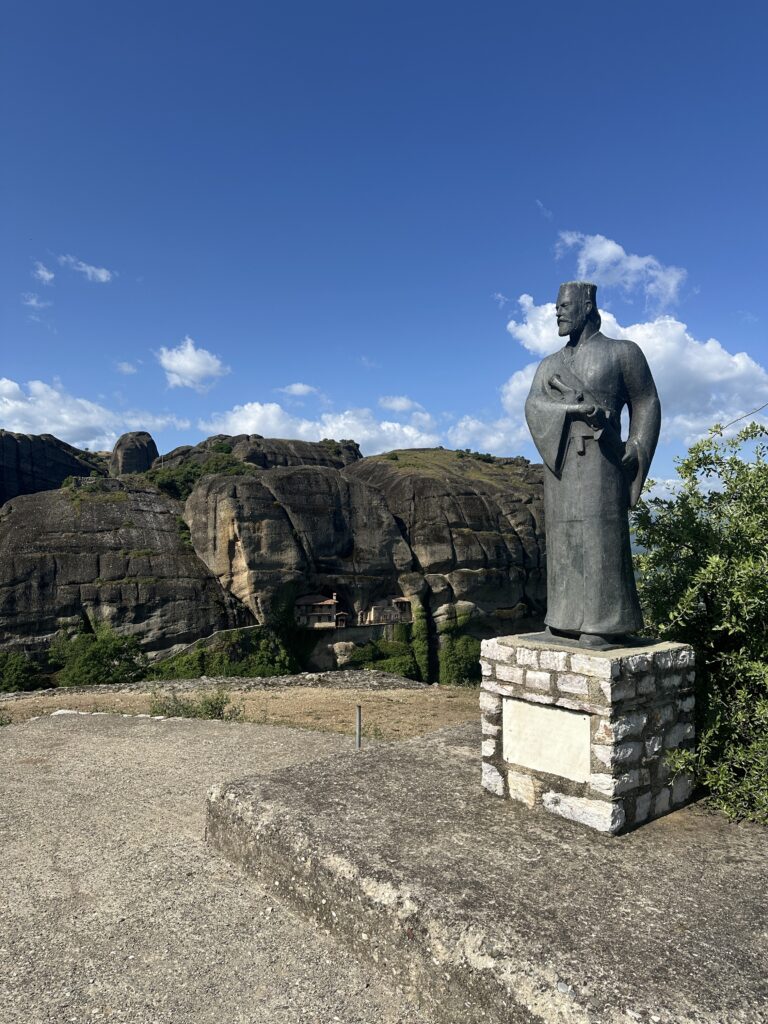
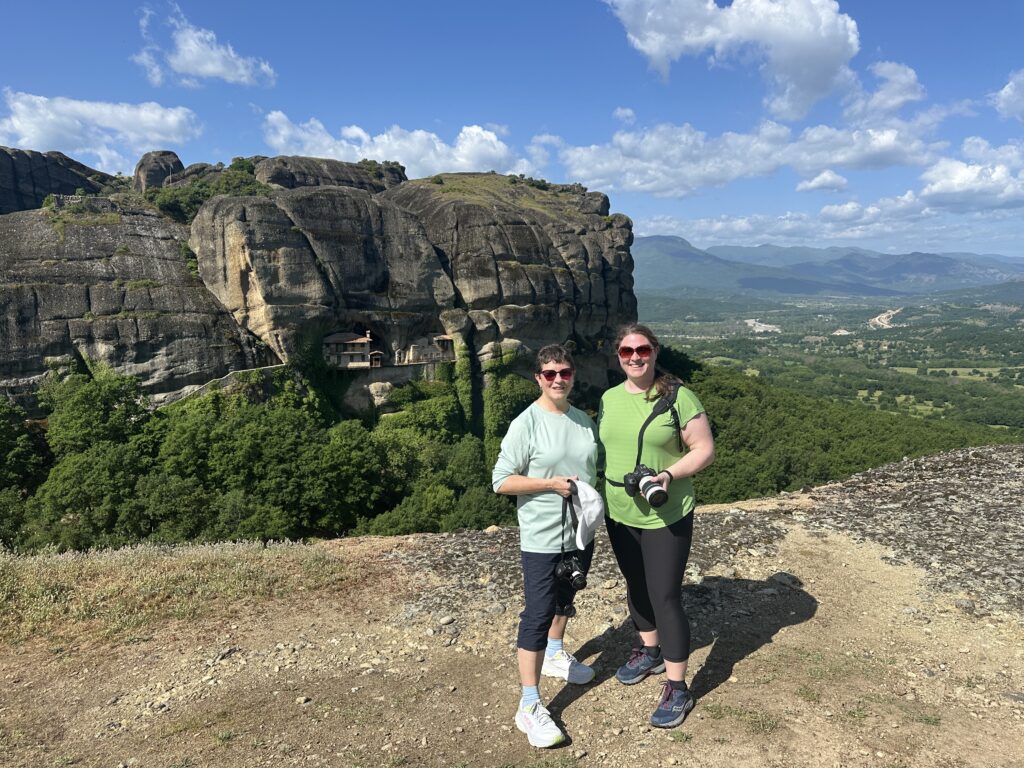
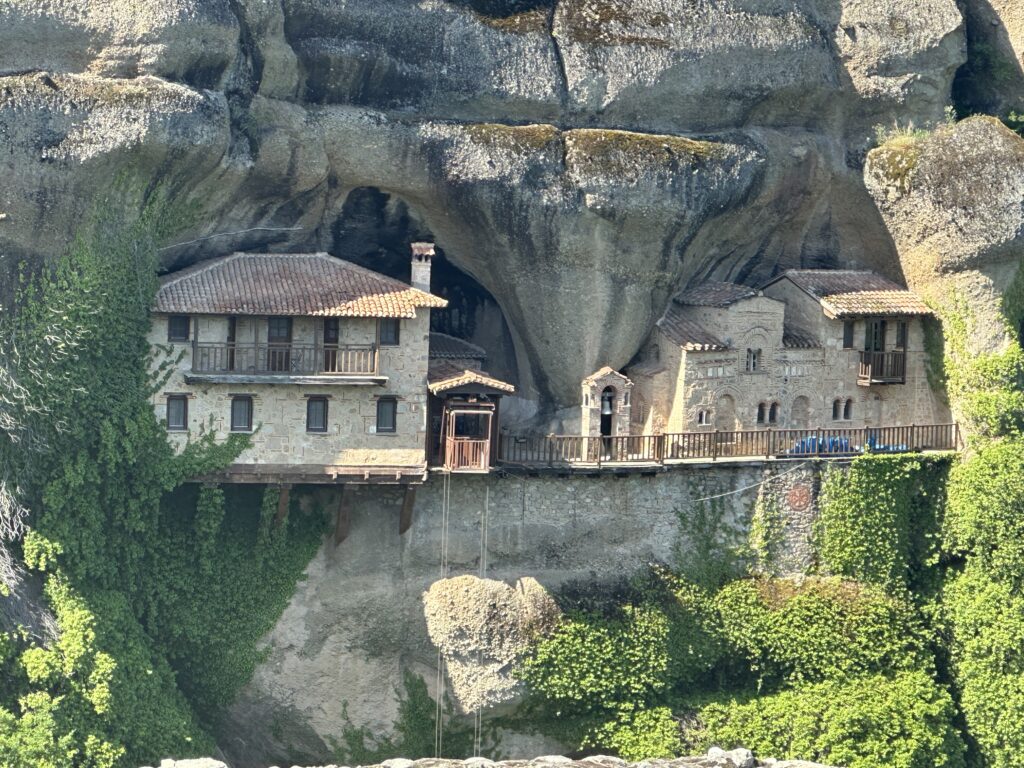
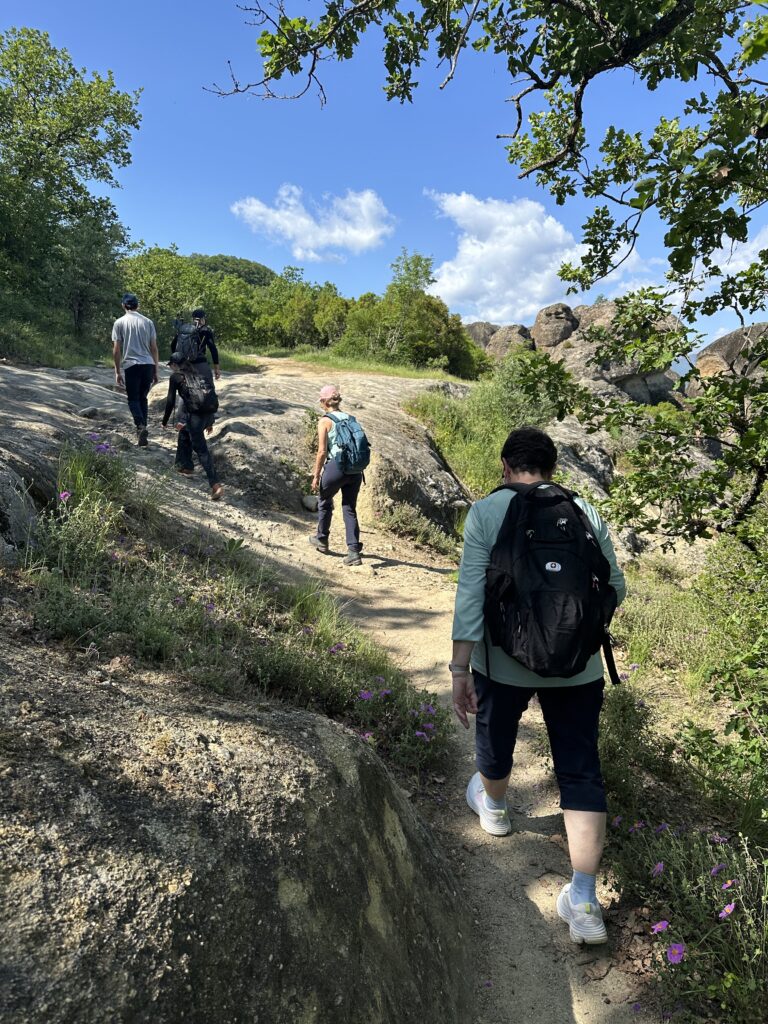
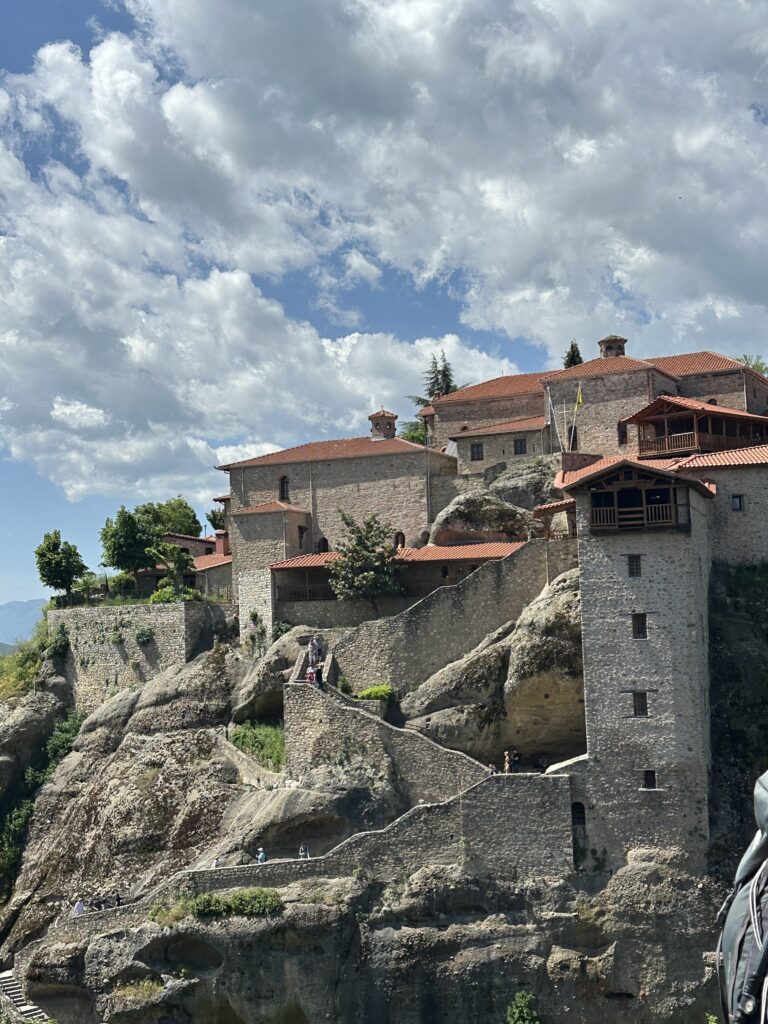
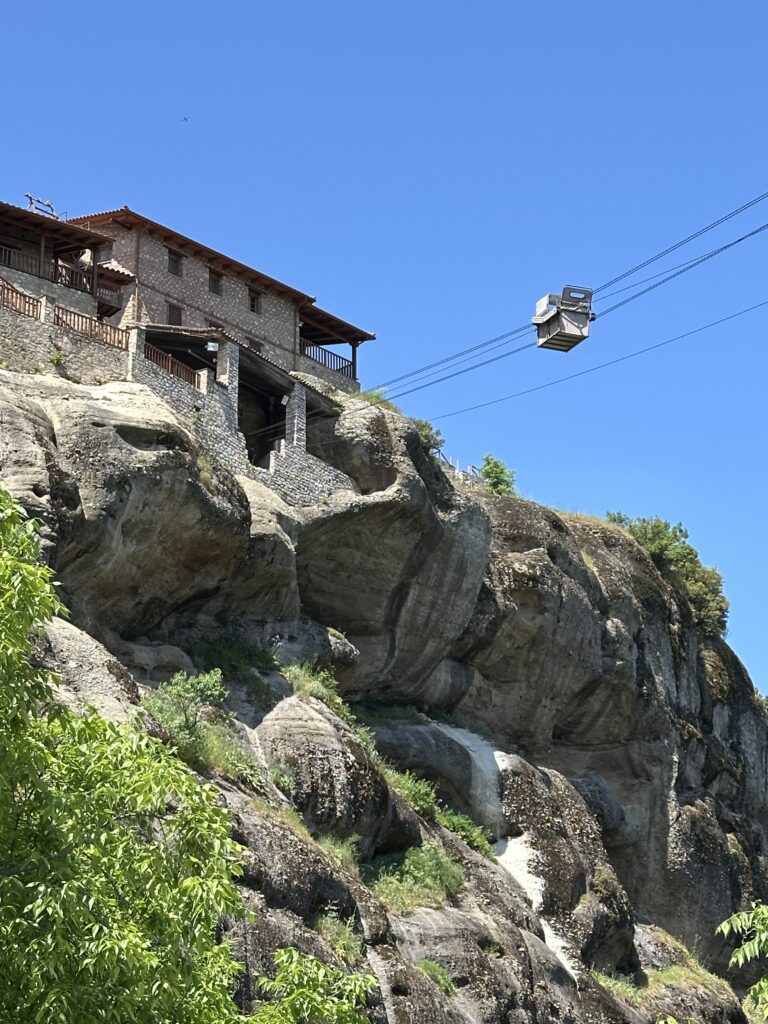
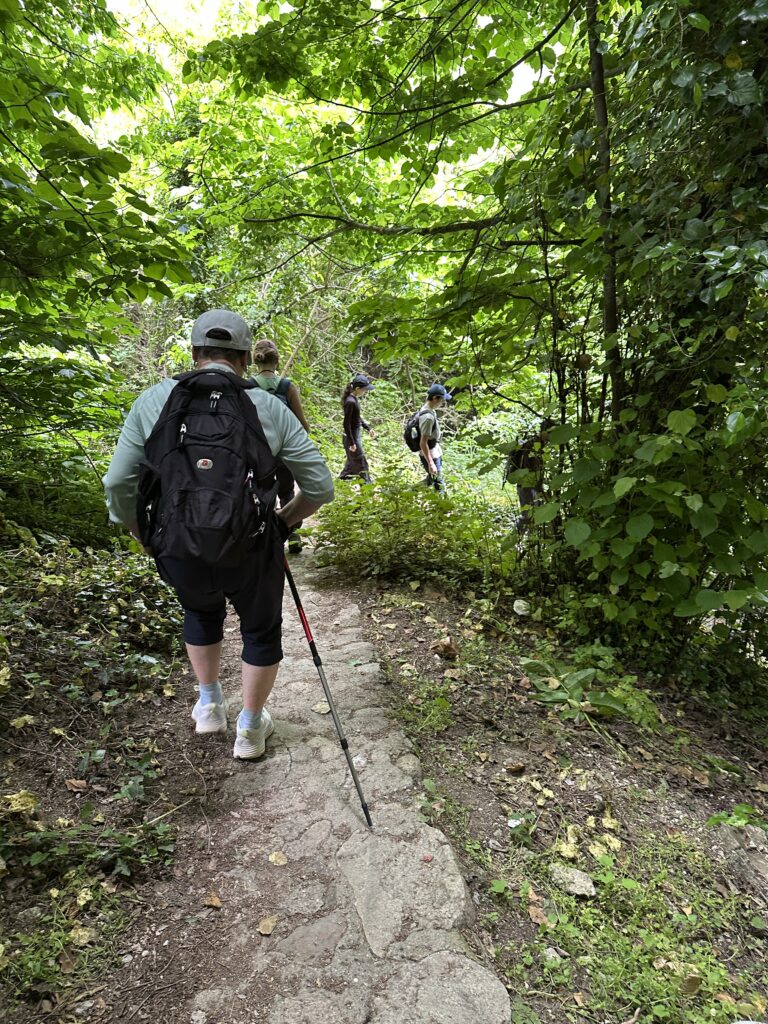
Wonderful story and photos. You and mom are troopers
Thanks, Judy. We can all do hard things when we put our minds to it!
WOW what an adventure. Thank you for sharing this place and describing these gems. Glad you and your mom made it safely.
So nice to hear from you Sylvie! You’re very welcome. I’m glad you enjoyed the story.
Wow, Shari, what an amazing adventure for you and your mom! You’ve definitely given us something to think about :).
Jo-Anne
Glad you enjoyed and might be inspired to check it out! I truly loved it.